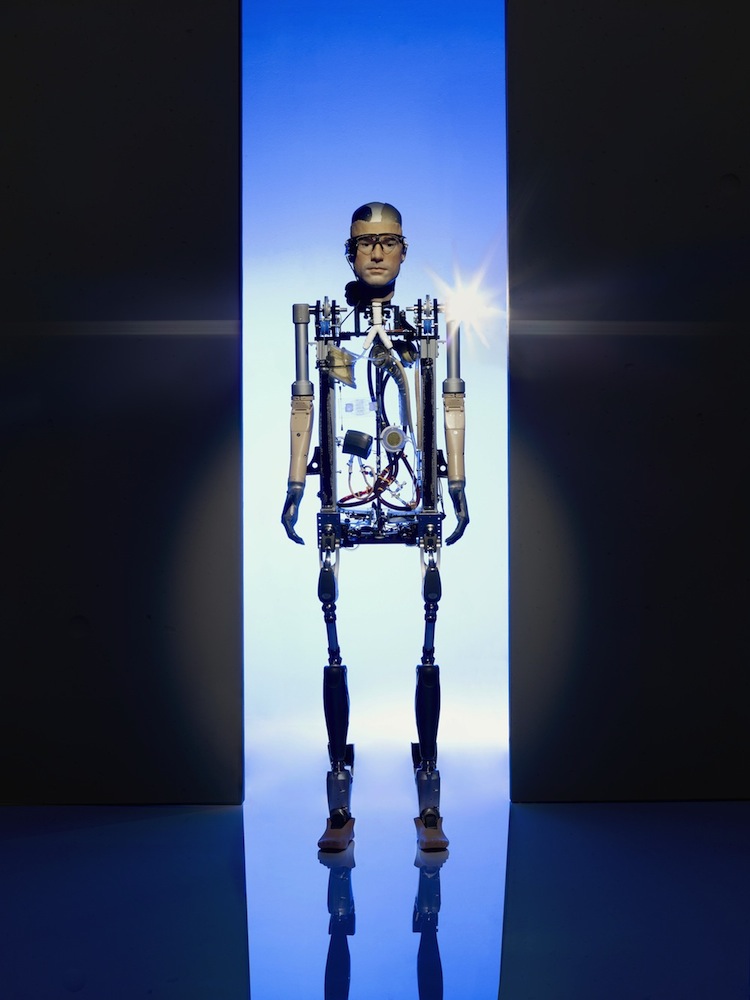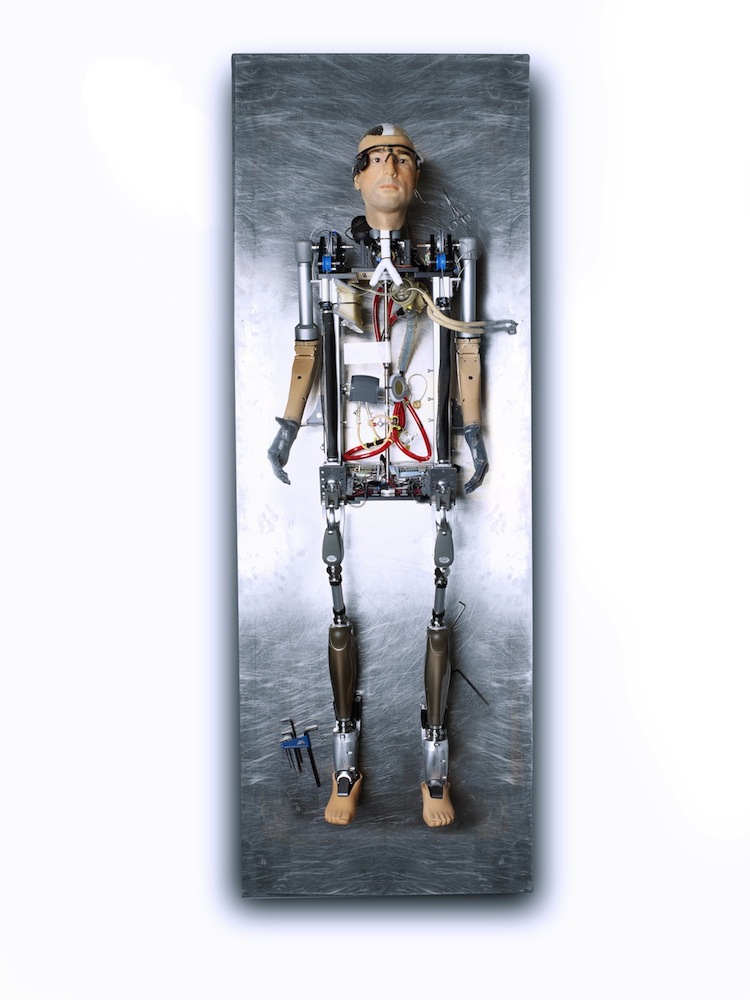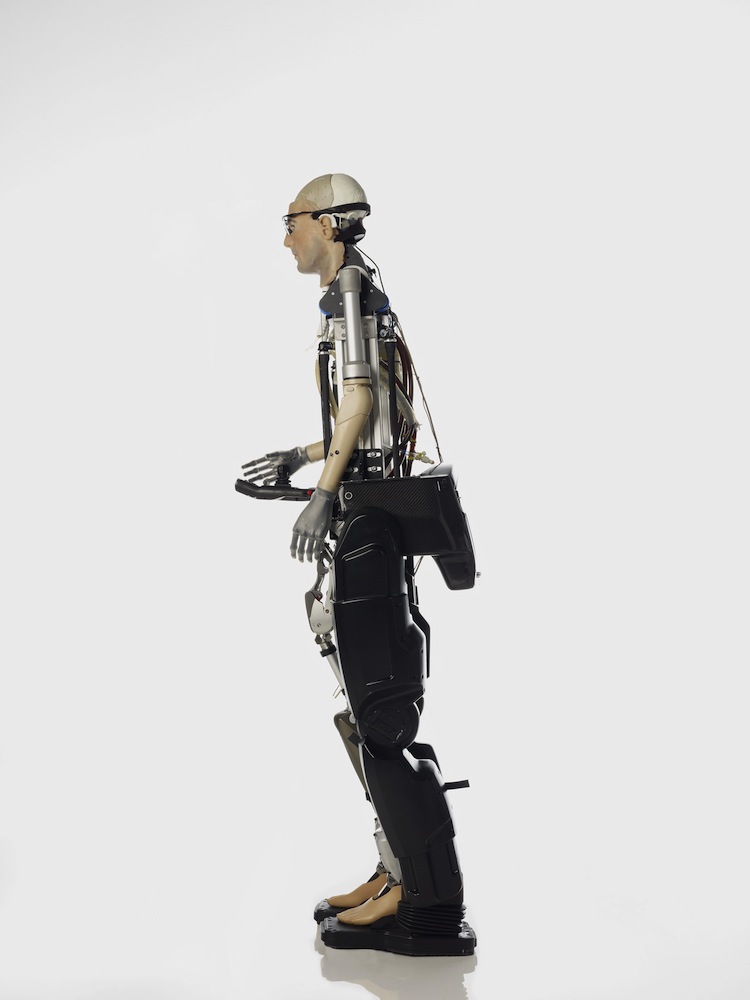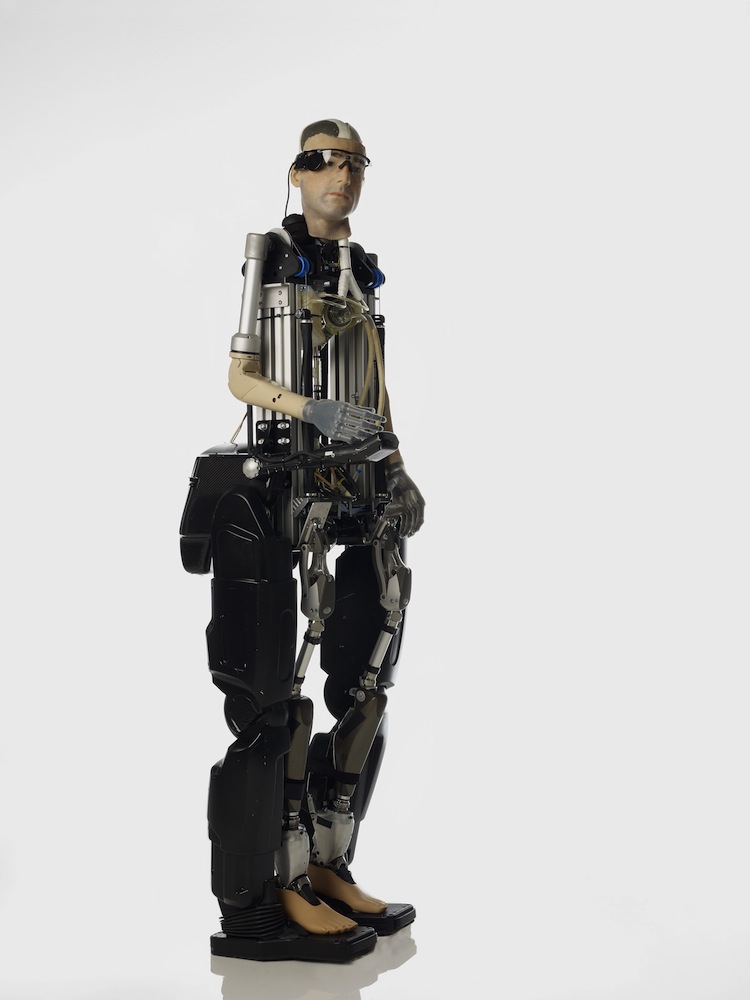Image Gallery: The Incredible Bionic Man
The Bionic Man

The Bionic Man is the world's first robot human made entirely of prosthetic parts. He can walk and talk and has a complete circulatory system. A Smithsonian Channel special about the bionic man airs Sunday (Oct. 20) on the Smithsonian Channel at 9 p.m. EDT/8 p.m. CDT.
Put on a happy face

The robot has a prosthetic face modeled after Bertolt Meyer, a social psychologist at the University of Zurich, in Switzerland. He also has a retinal prosthesis made by Second Sight in Sylmar, Calif.
Stepping out

The robot sports a pair of robotic ankles and feet from BiOM in Bedford, Mass. To support his prosthetic legs, the bionic man wears a robotic exoskeleton named "Rex," made by REX Bionics in New Zealand. His awkward, jerky walk makes him more Frankensteinian than ever.
Factory-made organs

The bionic man also has a nearly complete set of artificial organs, including an artificial heart, blood, lungs (and windpipe), pancreas, spleen, kidney, and functioning circulatory system.
Some assembly required

Roboticists Rich Walker and Matthew Godden of Shadow Robot Company in England led the assembly of the bionic man from prosthetic body parts and artificial organs donated by laboratories around the world.
Two-thirds human

The bionic man successfully simulates about two-thirds of the human body. But he lacks a few major organs, including a liver, stomach or intestines, which are still too complex to replicate in a lab.
He ain't cheap

The complete robot cost approximately $1 million to build.
Get the world’s most fascinating discoveries delivered straight to your inbox.
Ethical questions

Does creating something so humanlike threaten notions of what it means to be human? How much body enhancement is acceptable? And is it wrong that only some people have access to these life-extending technologies?

